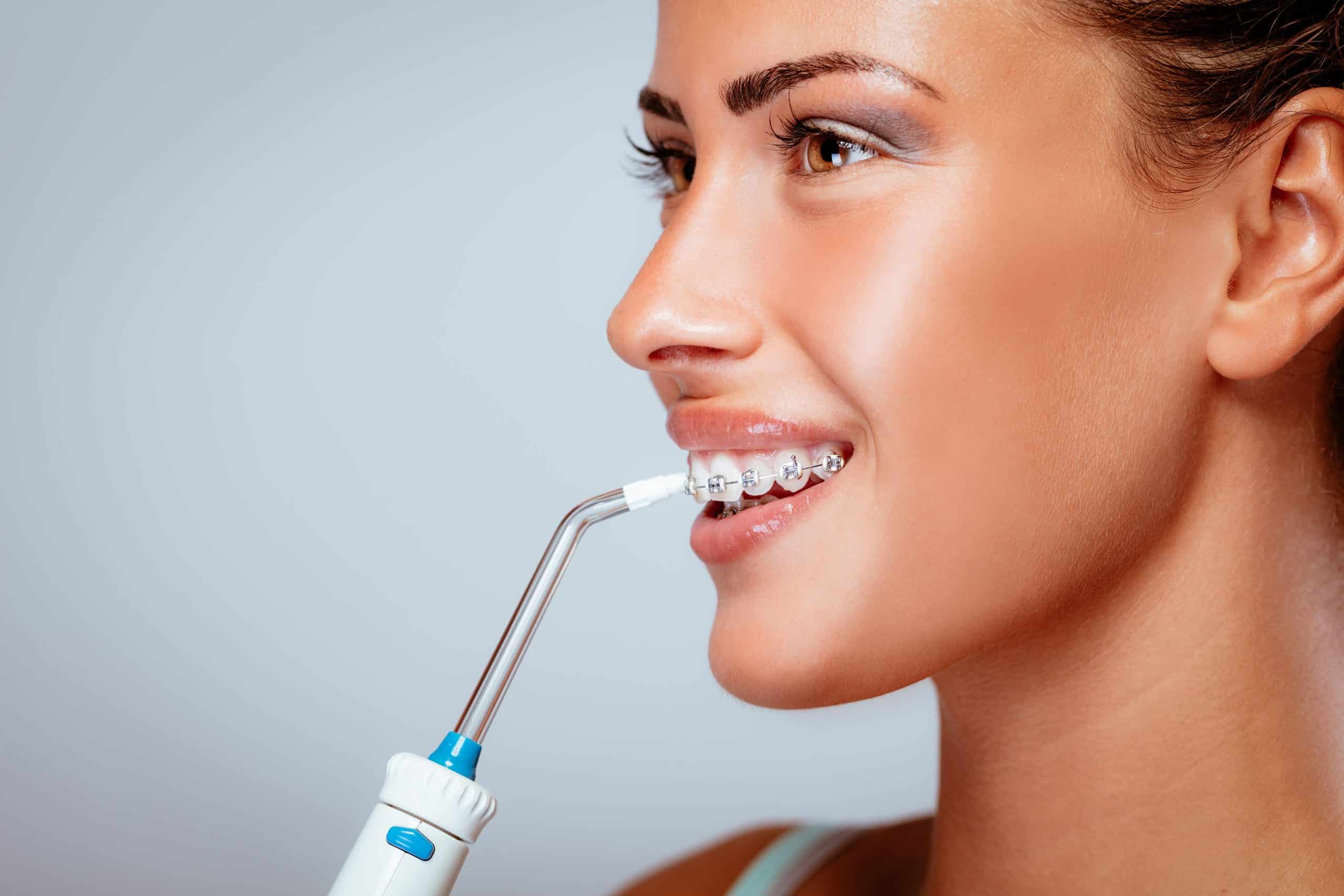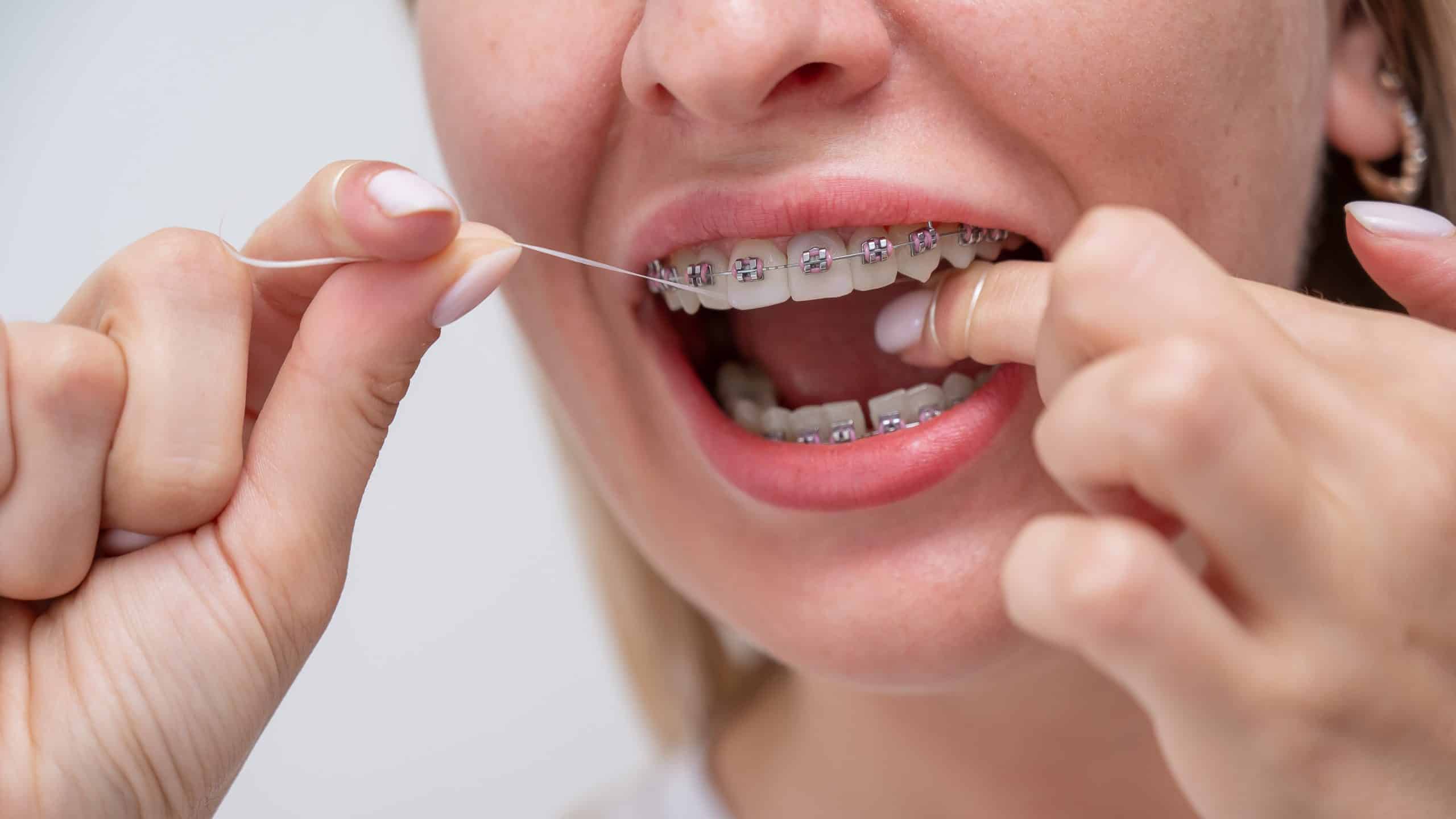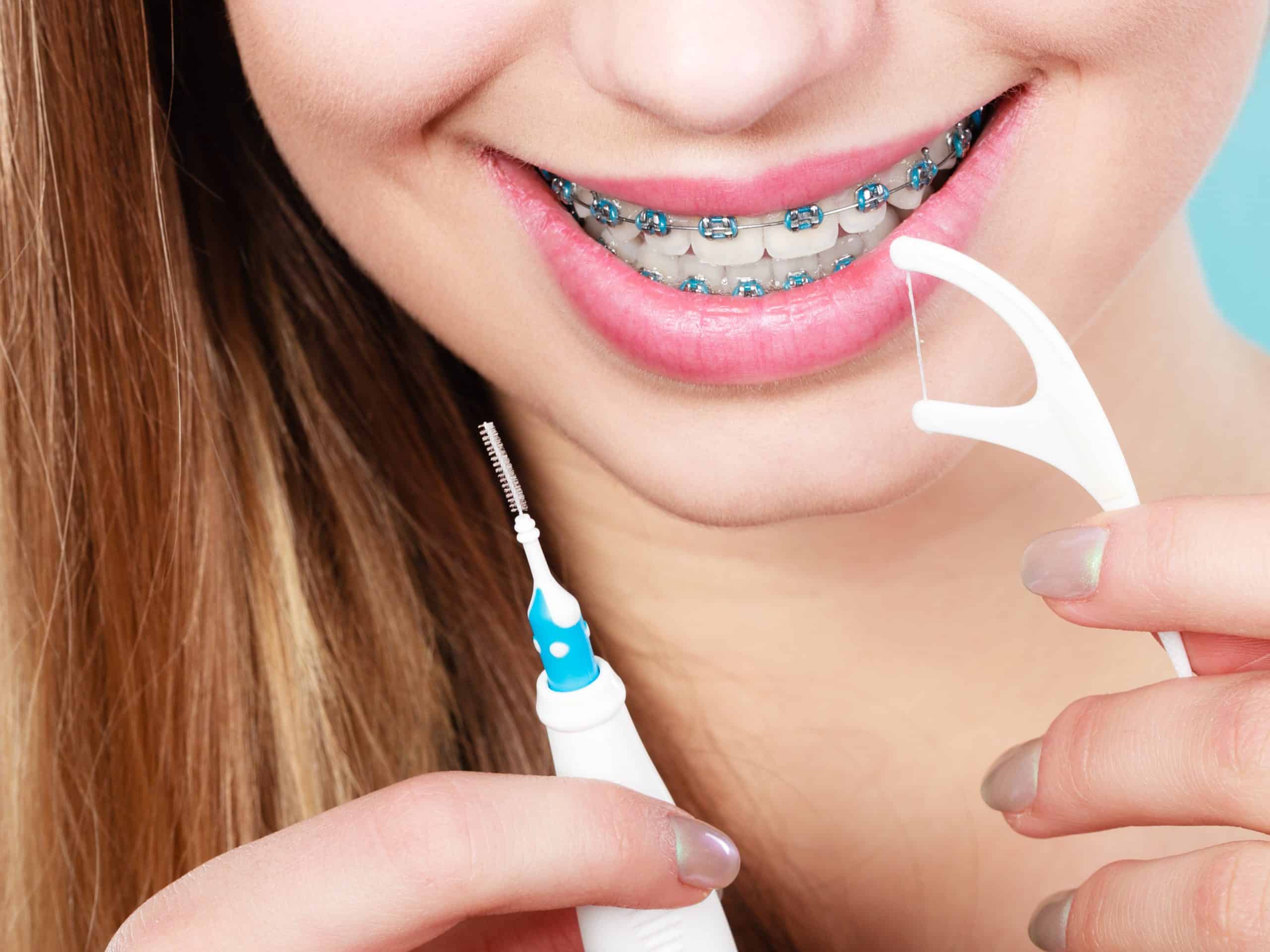Flossing with braces is often overlooked because many people assume that they don’t need to floss anymore once their orthodontist has finished putting them on. This couldn’t be further from the truth!
Flossing helps remove food particles that get stuck between your teeth during meals, preventing cavities as well as removing plaque buildup along the gum line where toothbrushes can’t reach.

Flossing Helps in Other Ways
Flossing with braces is different from flossing without braces, but it’s still the most important part of your treatment. Flossing helps promote healthy teeth and gums by removing food and plaque that can build up between the teeth and the braces’ wires.
Flossing also helps prevent gum disease, because it removes bacteria that can lead to infection and tooth decay.

Flossing does more to promote oral health than just removing stuck food. It also stimulates blood flow to the gums and that helps them stay healthy. Flossing improves gum health by reducing inflammation in the mouth caused by bacteria buildup on tooth surfaces or between teeth.
The best way to floss with braces depends on whether or not you have fixed orthodontic appliances like bands or brackets attached directly onto molars without any wires between them, also known as “non-braceless” appliances. If this is true for you then we recommend using an interdental brush instead because these tools are much easier for beginners than traditional string flosses!

Using Flossing Products
Flossing can be a bit trickier for those with braces than it is for the average person. Luckily, there are several options available to help make the process a little easier.
Use a floss threader to get between your teeth and under wires. Floss threaders are little plastic devices that look like mini-safety pins with tiny holes along their length. They’re a little like fishing poles, so they’re easy to use even if you have braces on both the top and bottom teeth.
You pull the floss through them and they help improve your brushing technique. They also keep you from damaging your gums or loosening any brackets as you work out kinks in your technique over time. Just be sure not to push too hard against anything sharp!
Types of Floss for Those with Braces
There are many different types of floss available, including orthodontic floss, dental tape, and interdental brushes. Each one has its benefits and drawbacks depending on how much space you have between your teeth.
Other Ways to Floss
Other types of picks, brushes and flossing devices are cheap to buy at available at most drug and grocery stores. One is a floss pick. This is a plastic device similar to a floss threader but it already has the floss attached. It also has a pick on the end. They are made to be used once and thrown away and come in a large pack.
Another device is commonly called “Christmas trees.” These are a combination of a pick and a small tree-shaped brush that can get into smaller crevices that your normal toothbrush can’t maneuver. They also come in multiple packs since you only use them once before throwing them away.
Those who want some high-tech help with brushing their teeth should invest in an electric toothbrush. Some electric toothbrushes are specifically designed for people who need extra assistance getting around their mouths because of dental issues such as braces or periodontal disease.
These usually come with special attachments which allow users better access while brushing so they can reach farther back than usual.
Water picks can be enormously helpful as a substitute for traditional flossing. These are devices that use high-pressure water streams to knock out food debris from hard-to-reach areas. Like electric toothbrushes, water picks are an investment but could be a good investment for healthy gums and teeth.
Water picks are gentle enough not to damage any dental work but effective enough to keep your mouth healthy overall. They are also simple to use. Just turn on the device and aim it at each tooth individually for about 15 seconds per quadrant, which are the four sections into which dentists divide teeth. This will ensure thorough cleanliness without having to spend hours scrubbing away at every surface in there!
How do I floss with braces?
The technique is basically the same but you will need more time to do it and it’s best to use a floss threader. You will also likely need to change your hand positions to get in between all the areas with braces.
If you’ve never flossed before, it’s important to learn how to do so correctly. Although it might seem like an unnecessary step when practicing good dental hygiene habits, flossing will keep your mouth healthy as well as prevent painful gum disease in the future.
Flossing with braces starts with using a floss threader and orthodontic floss. You will need to thread behind each wire. Next, wrap the floss ends around your two pointer fingers. Leave some floss between them and make it taunt. Move the floss back and forth between each tooth.
Be careful as you get close to your gums. You don’t want the motion to irritate your gums and start them bleeding. They could bleed some anyway if you have gingivitis.
Why is flossing important when you have braces?
When you floss with braces, you’re helping to prevent tooth decay and gum disease. The spaces between your teeth are where food particles can build up and cause plaque to form.
This is especially important if you have braces because their design makes it harder for you to get a clean brush around all of your teeth every day. Flossing with braces allows you to remove these food particles from between your teeth so that they don’t turn into cavities or gum disease over time!
How often should you floss with braces?
The answer to this question is “at least once a day.” If you can, try to floss at least once every night before bed. If that’s not possible, then try to floss in the morning as soon as you get out of bed or when you first wake up.
If all else fails and you’re unable to floss at all for some reason such as a lack of time, don’t worry! Just make sure it gets done regularly after you brush your teeth or after eating things that can get stuck like corn on the cob or certain meats.
Flossing with braces is an important part of your treatment and overall oral health. It’s recommended that you floss daily to help prevent plaque buildup, so don’t forget to add it to your routine!

